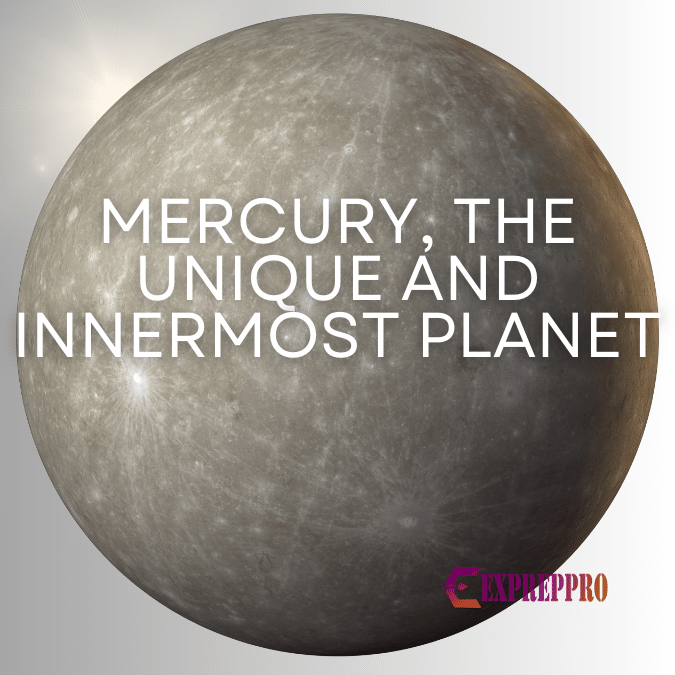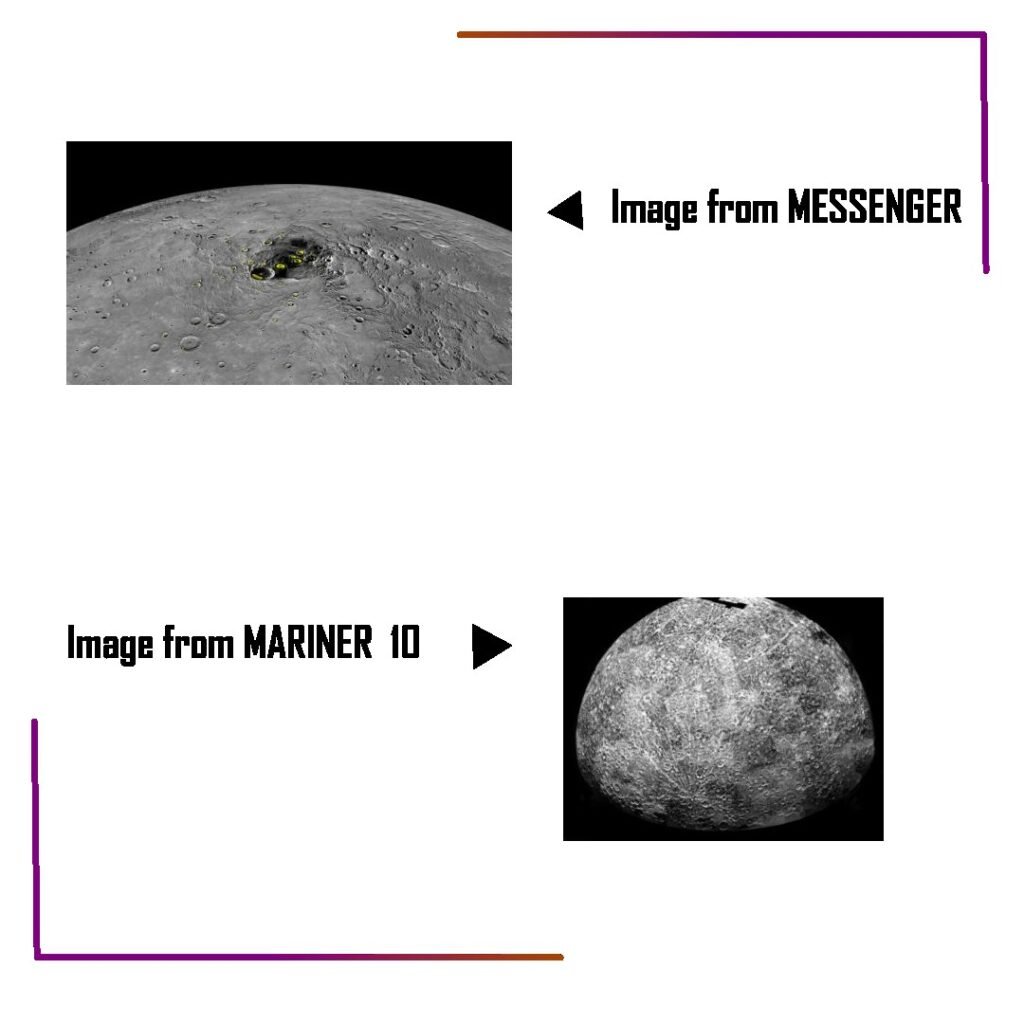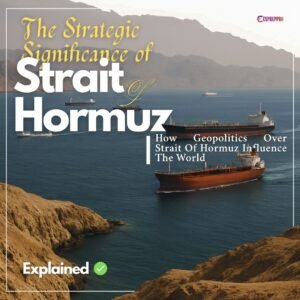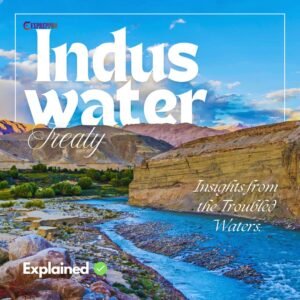
Mercury is the closest or innermost planet to the sun. It is one of the five planets known to ancient humans, and its presence has been known since at least the 3rd-millennium B.C.E.
The planet is visible to an observer on Earth with the naked eye and is known as “Morning star” (for about two months). Then, it disappears and reappears later as an “Evening star. ” Mercury even reaches magnitude -1.3 and rivals Sirus, the brightest star in the sky.
Due to the proximity to the sun and its small size, it is challenging to conduct telescopic studies. It is also known as an inferior planet( due to its proximity to the sun). The distance from the sun is 57.9 million K.M. or 0.39 A.U.The orbit is much more eccentric than the outer planets. Due to this large eccentricity, its perihelion comes within 46 million K.M. while its aphelion is about 69.8 million K.M.
MARINER MISSION
The first spacecraft to perform a flyby of Mercury was MARINER10. It achieved three flybys on March 29, September 21 1974, and March 16, 1975. This spacecraft imaged about 45% of the surface( about 1 km per pixel). Even though this resolution is similar to telescope-based photos of that year, it paved the way for future studies. MARINER 10 also identified an internally generated, global magnetic field ( The only terrestrial planet besides Earth with an internally generated magnetic field.
MESSENGER MISSION
The second spacecraft was MESSENGER [Mercury Surface, Space Environment, Geochemistry and Ranging]( launched on August 03, 2004). It took 7-years to reach its destination and used gravity assists from multiple flybys of terrestrial planets to slow its entry towards Mercury so that the main engine could perform an orbit insertion. The flybys include an earth flyby (August 2005), two flybys of Venus(October 2006, June 2007) and three flybys(January 2008, October 2008, September 2011); it finally entered the orbit of Mercury.

BEPICOLOMBO MISSION
It will find out the composition, geophysics, atmosphere, and magnetosphere. The spacecraft Started its journey on 20 October 2018. With nine planet flybys, it will reach Mercury by December 2025. This mission is named in honour of Italian Mathematician Guiseppe (Bepi) Colombo.
GENERAL CHARACTERISTICS
Mercury’s surface is heavily cratered, with more extensive volcanism. The mass of Mercury is only about 5.5% when compared with that of the Earth. Due to its large mass in relation to its volume, Mercury has a high mean density of 5427Kgm3, second only to the Earth (5515 kg m3). Its surface contains a fragmental material known as Regolith. The impact of meteoroids is responsible for the Regolith’s formation.
Its surface is divided into two major geologic units- Smooth Plains and Intercrater Plains. A third Debris excavated from depth by impact craters is a third unit known as Ejecta.
The Calories Basin is the largest well-preserved impact basin and nearly coincides with one of Mercury’s “Hot poles”.
Its surface is hot (temperature exceeds 700 kelvin) but not the hottest planet. Due to the atmospheric greenhouse effect, Venus’s surface is hotter than Mercury.
Surface-bound exosphere is present at Mercury. Its gas molecules collide with the surface rather than colliding with each other.
The exosphere also contains Hydrogen, Helium, Sodium, Potassium, Calcium and Magnesium. Its exosphere originates from the planet’s surface, solar wind, meteoroid impact and sputtering. Sputtering means ions from the solar wind or Mercury’s magnetosphere impact the surface.
The magnetosphere of Mercury is also populated with Plasma or hot ionized gas. The interaction of the magnetic field with the solar wind creates a magnetosphere. It is smaller than Earth but strong enough to withstand the solar wind on the planet’s dayside under normal conditions.
MERCURIAN PHYSICAL FEATURES -NAMING CONVENTIONS
Craters are mostly named after famous Authors and Musicians like Dickens and Beethoven.
Valleys are named after prominent radio telescopes or radio observatories such as Goldstone.
Prominent ridges and scarps are named after spacecraft like Discovery.
Plains are named after the name of the planet Mercury in various languages, for instance, Odin in Scandinavian. Borealis Plamitia (Northern Plains) and Caloris Basin (Plain of Heat) are exceptions.
Mountains, usually the rims of large impact craters, are named for the nearest plains.
UNIQUE DOUBLE SUNSETS AND TWO-YEAR DAYS
Mercury’s spin and orbital motions are prograde and are coupled in the ratio 3:2, making exactly three rotations on its axis for every two orbits around the sun. Due to this 3:2 resonance, the same hemisphere always faces the sun at alternate perihelion passages.
Due to spin-orbit resonance or 3:2 resonance, Mercury’s solar day is equal to two Mercurian years or 176 Earth days. This results in a day longer than its year [the only planet with this unusual phenomenon].
Mercury’s spin axis is almost perpendicular to the plane of its orbit or obliquity, which is close to 00. Therefore, Mercury does not experience seasonal changes.
The subsolar points at perihelion are the 00 and 1800 longitudes, known as Hot poles. The 900 and 2700 longitudes are called Warm poles because they are the subsolar points at aphelion.
Due to 3:2 resonance, large eccentricity, and variable orbital velocity, the sun briefly backtracks in the sky during perihelion passage. At the warm poles after sunrise, the sun reverses direction, sets, and then rises again.
If the year starts at sunrise, it will end at sunset. So, 88 Earth days will receive sunlight.



